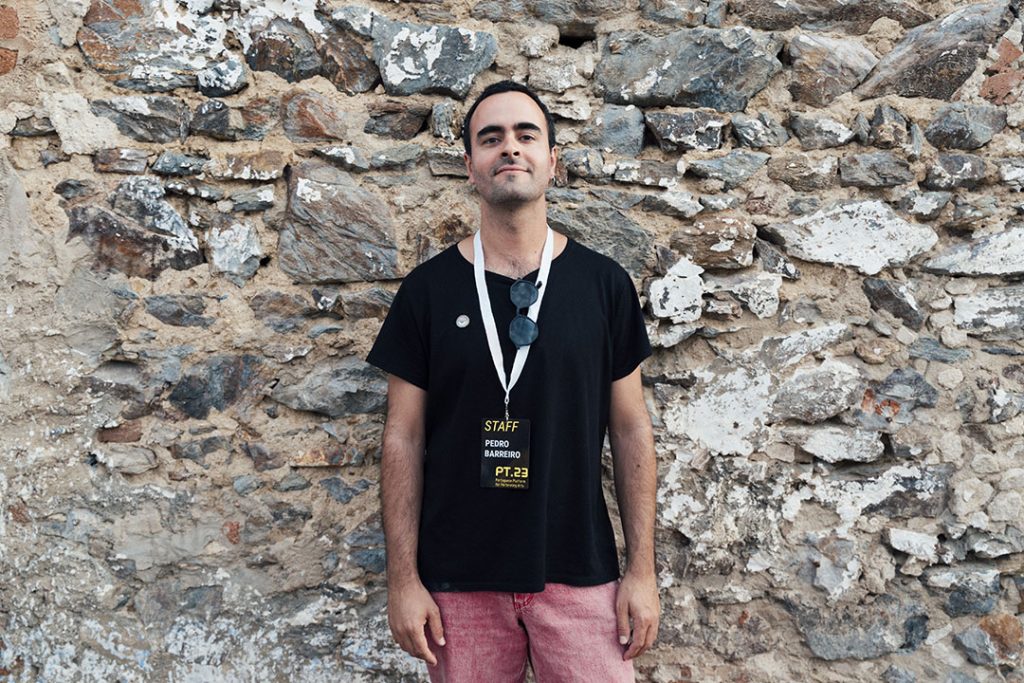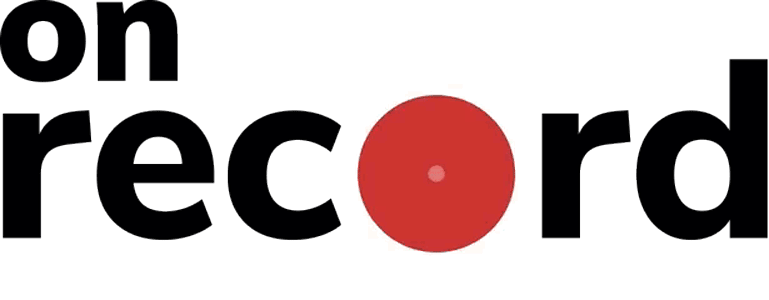Now that the waters have calmed after PT, I talked to artistic director Pedro Barreiro to understand the outcome of this edition and what the future holds for O Espaço do Tempo.

What is your assessment of this edition, which is also your first as artistic director?
The balance is clearly positive. I think we managed to have a very interesting dynamic of people attending this platform. I am very satisfied with the curation, which was shared by a large jury [11 people, including Barreiro himself], with the way it was organised from the point of view of the schedule, the organisation of the shows, the coexistence of different languages. It was the most attended PT ever in terms of the number of programme makers, producers, directors, the artistic team and all the people involved. So I am very satisfied.
It was working on a model of the previous PTs, designed by Rui Horta, that had already proved to be effective. Now I’m really looking forward to PT.25, which is the edition I’m going to fully take the reins – obviously, trying to keep all the things that worked well and others that will require continued thinking and sharing with artists and peers, to realise how the next platform can be its best.
Looking at previous editions of PT, notably the last one in 2019, the impression is that the works were more “choreographic”, whereas this year’s edition seems to have focused more on performance. Is there a new focus in this new artistic direction?
Maybe… But PT is a performing arts platform, not a dance or choreographic platform. Obviously, the European tradition of platforms is closer to dance languages, choreographic languages. But taking into account that this is a performing arts platform, on the one hand it should show dance, theatre, performance and performative hybrids, and on the other hand, if we pay attention to what has been coming from the artists regardless of their medium or discipline, there are more and more hybrid proposals, closer to what can be a performance language in a more general sense.
Why do you think that is happening?
Here I will have some difficulty in separating myself from my own artistic practice, which is also quite hybrid. But I think it is because there is an increasing understanding that artistic discourses do not have to belong to a tradition or disciplinary lineage, but rather to the character and identity of the person who is creating the work. It is also important to realise how the work can operate in more than one context. To construct an artistic discourse, artists can use whatever disciplines, resources, techniques, means – whatever is at hand. I call it “whatever works”, and this seems to me to be increasingly present. I may be wrong, but I feel, as an artist and as a curator, that it is quite evident that this is happening in Portugal.
I must also say that we have a super broad jury, from dance, theatre, more hybrid languages, more transgressive areas. Perhaps it was the most plural or comprehensive jury that PT has ever had, and this certainly had an impact on the choice of pieces presented. Bearing in mind that this is a platform for contemporary performing arts, it has to keep up with the present day and has to be comprehensive enough to be able to encompass very diverse contemporary languages. I really like this comprehensiveness and coexistence in the same programme of different languages, approaches, references and ways of working, because that is the world in action, contemporaneity in action.
So is the political nature of most of the works presented at PT.23 a reflection of the national artistic landscape and the intentions of Portuguese/Portugal-based artists, or was it rather a selection criterion by the jury?
Art and politics are different domains – although all art is political, even art that does not want to be. Art that might hide from what may be the political character of its compositional proposals or poetic act – that too is a political statement. What seems to me to be in the DNA of the poetic act, that is, of making art, is the ability of art to propose another world or other worlds, other ways of being in the world, other configurations or transformations of the world – and this is a political act. I think there are much more effective ways to contribute to political action than just art which talks about it. In PT.23 I don’t think that was the case, but it seems to me that there was one key feature: that this PT did not only have Portuguese artists or artists from Portugal. In recent years, we [Portuguese] have finally been facing, welcoming and wanting to engage with the complexity of our history, of the atrocities we have committed, of the people we have in our country, who come from different places and who should, yes, have a place here. In PT.23 we had artists who descend from or have lived in places whose communities are from Brazil, Angola and Mozambique – and this is very relevant to the artistic discourses of these artists, which can be more politicised.
The political, or visibly political slant of the works that were eventually selected was never a criterion of the jury, but the jury is committed to the link that exists between making art and what must be worked into art, which is the changing world.
And how was the selection process for the artists? Do the artists apply or are they all nominated by the jury?
The jury was selected by me and Rui Horta. When the process started, Rui Horta was still artistic director of O Espaço do Tempo and it was already known that I would be the new artistic director, so this was a mutual agreement. After the jury was formed, each member proposed between five and ten works by artists they had seen in the last two years. Then we put together all the proposals, the videos and comments from the proposer and other people in the jury. There were several meetings to discuss the proposed works, in relation to their relevance, quality, the importance of this or that artist being programmed at PT, but also considering how their participation could be key to their path. We are also interested in understanding how we can compose a curatorship that tests the diversity of what is being done in Portugal, the richness of the performing arts discourses being created in the country. In the end, we voted democratically until we reached the final selection of these 18 artists.
Is this number variable?
Yes, it can vary. The idea is to go for around 20, but there are many factors, the most determinant being financial – one of the Achilles tendons of platforms in general.
Several names that are now prominent have passed through PT, such as Tiago Guedes, Tiago Rodrigues, Tânia Carvalho, Marco da Silva Ferreira and Marlene Monteiro Freitas. Do you feel that the performing arts “made in Portugal” now have a greater circulation – national and international – and recognition? And what is the role of PT in that?
PT has a very important role and has been visibly determinant in the international careers of several artists coming from Portugal. That is quite clear.
Portugal has a uniqueness that comes from all this historical, geographical confluence, and that gives the works created here a distinctive interest. From the point of view of the management and artistic direction of PT, I am interested in growing its effectiveness and its influence on international programming relationships, so that we can give the artists more visibility, better working conditions and access to other markets – and when we talk about markets, we talk about the financial conditions for them to develop.
What are the shortcomings and challenges still to be overcome in the dissemination of the performing arts in Portugal?
More is being done now than 5, 10 or 15 years ago, but we are still a long way off. We still have a very incipient system of support, whether public or private. From the point of view of public support for the arts, everyone knows that however good the intentions of the people leading the ministries and general directorates, there is chronic underfunding which is highly damaging to the professional cycle of contemporary arts in Portugal. Is it currently the highest funding ever? Perhaps it is, but it is still by no means enough. What is important to always keep in mind is the maintenance of dialogue, goodwill and understanding that relations are multilateral and not unilateral. We must pay close attention to this so that practices and policies are adequate to account for all the potential that Portugal has.
How is the involvement of O Espaço do Tempo and PT in particular with the local community?
Talking in economic terms, PT has a huge impact. Montemor-o-Novo is a small town, and we sell out all the local accommodation, hotels, everything is reserved for us. From the point of view of the temporary employment we generate, it is also remarkable. At O Espaço do Tempo we have a team of 10 people, and during PT we are about 60, including trainees, who in this edition came from the University of Évora and ESAP (Escola Artística do Porto). From the point of view of community, access to PT I think is still limited, perhaps more than it should be. But it is also difficult, because the spaces are small and we cannot have all the shows open to the public.
Outside PT, O Espaço do Tempo has other projects for that kind of community involvement…
Exactly. O Espaço do Tempo has a history of relationships with the community that is very relevant, with projects in and with schools, with training, conferences, shows for families, for younger audiences, open rehearsals with general and free access… There is an ongoing programme with several offers of this nature that we will develop further from 2024. Espaço do Tempo has an undeniable impact on the local community and the overwhelming majority of the audience is from here, although we also reach audiences from Évora, Vendas Novas, Santarém, Arraiolos, Lisbon… Montemor has a very unique demographic. A lot of young people are coming to live here.
Looking to the future, the Convento da Saudação, your home, has been undergoing renovations after the collapse of two vaults in 2018. What are the expectations for when it reopens?
The Government expects the works to be completed by the end of 2026. Fifteen days after PT we had a very important visit from the Minister of Culture, Pedro Adão e Silva, the Secretary of State for Culture, Isabel Cordeiro and the Minister of the Presidency Mariana Vieira da Silva, to secure the commitment of 5.9 million euros to finish the works at the Convento da Saudação so that O Espaço do Tempo can return and have its headquarters there. These are very expensive and large-scale works, but very important. Although the spaces where we are now are pleasant and functional, the poetic impact the Convent has is completely different. It has a very distinct richness. It’s not even a replica of a theatre, it doesn’t just work with theatrical boxes, with trusses, with black or white walls…
I’m looking forward to returning to Convento da Saudação so that O Espaço do Tempo can grow even more and focus on its distinct potential. Regarding the coexistence of the Convent with the other spaces, it seems most likely that we will not be able to keep all of them. But at least one or two we are interested in keeping – such as Magina, which is very central, effective, and enables contact with the local community. Overall, how do we see our return to Convento da Saudação? With great joy and enthusiasm.



